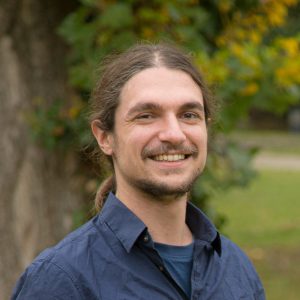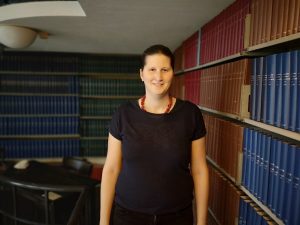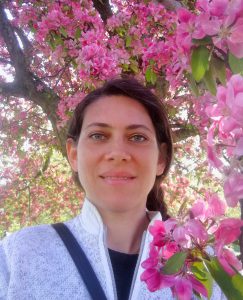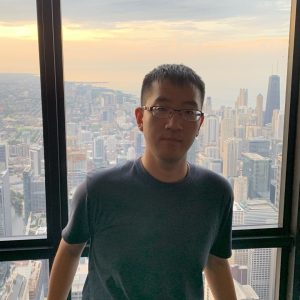Seeing is Believing Best Poster Awards
From its beginning in 2011, Seeing is Believing has embraced novel imaging technologies that open new windows for biological discovery, including single-molecule and super-resolution, light sheet and correlative light electron microscopy. This year, the EMBO| EMBL Symposium was held virtually for the first time, and it did not disappoint! We had around 640 participants, with over 130 posters presented during the digital poster sessions. We are excited to share with you the research from the five best poster prize winners, who were also given the opportunity to share their work with a talk at the end of the meeting!
A novel view on protein-protein interaction: Investigating protein-complex formation using correlative dual-color single particle tracking
Presenter: Tim Abel

Abstract
Characterization of protein-protein interactions is one of the central aspects, when investigating cellular mechanisms. Most of the established biochemical techniques to describe protein-interactions rely on the isolation and purification of the proteins of interest. This becomes especially problematic, when analyzing membrane-localized complexes or transient and dynamic interactions, which are difficult to isolate or easily disrupted. In this project, we use dual-color single particle tracking to investigate the formation of the ER-membrane resident multi-protein complex Hrd1 in living cells.
The Hrd1-complex is one of the central ubiquitin ligase complexes in endoplasmic reticulum-associated degradation (ERAD). During ERAD misfolded or otherwise faulty proteins are transported from the ER to the cytosol and targeted for degradation, which both involves the name-giving subunit of the Hrd1-complex Hrd1p. Biochemical analysis indicates that this protein forms homo-oligomers but the stoichiometry within the functional complex and the dynamics of its formation remains disputed.
To assess Hrd1p-oligomerization using live-cell imaging we labeled endogenous Hrd1p with either the SNAP- or the Halo-tag using CRISPR/Cas9 mediated gene integration. Both variants remained fully functional and enabled labeling using dyes compatible with SM-imaging. TIRF microscopy revealed single diffraction limited spots. When labeling competitively with differently colored halo-ligand-conjugates, Hrd1p-punctae exhibited strong correlated movement between both colors indicative of homo-oligomerization. Its degree of interaction was quantified by directly correlating single-steps extracted from the SM-trajectories, which proved to be a robust way to analyze protein-protein interactions. Additionally, PALM-imaging of a Halo-labeled Hrd1-substrate was able to directly show its interaction with Hrd1p-SNAP by correlated movement on the SM-level. In the future we will use this correlative SM-approach in combination with genetic and inhibitor based interventions to interrogate factors required for Hrd1p-complex assembly, its formation dynamics and how substrates are recruited.
HaloTag9: An engineered protein tag for fluorescence lifetime multiplexing
Presenter: Michelle Frei

Abstract
Self-labeling protein tags have become important tools in fluorescence microscopy. Their use in combination with fluorogenic fluorophores, which only become fluorescent when bound to their protein target, makes them particularly suitable for live-cell applications. The fluorogenic turn-on observed upon labeling as well as the photophysical properties of the fluorophore are mainly determined by the protein surface near the fluorophore binding site. However, up to now, most efforts have been invested in the development of new fluorophores and only little attention has been paid to the engineering of the self-labeling protein tag.
Here we report on the engineering of HaloTag7 to modulate the brightness and fluorescence lifetime of bound rhodamines. Specifically, we developed HaloTag9, which showed up to 40% higher brightness in cellulo and 20% higher fluorescence lifetime than HaloTag7 upon labeling with rhodamines. This makes it an ideal tag for imaging techniques such as confocal microscopy or stimulated emission depletion microscopy. In addition, combining HaloTag7 and HaloTag9 enabled us to perform live-cell fluorescence lifetime multiplexing using a single fluorophore. The difference in fluorescence lifetime was further exploited to generate a chemigenetic fluorescence lifetime based biosensor to monitor cell cycle progression. Overall, our work highlights that the combination of protein engineering and chemical synthesis can generate imaging tools with outstanding properties. We expect HaloTag9 to be beneficial for a multitude of live-cell microscopy applications.
Asymmetric nuclear division generates sibling nuclei with different identities
Presenter: Chantal Roubinet

Abstract
Although nuclei are defining features of eukaryotes, we still do not fully understand how the nuclear compartment is duplicated and partitioned during division. This is important, as the mechanism of nuclear division differs profoundly across systems. In studying this process in Drosophila neural stem cells, we recently found that the nuclear compartment persists during mitosis due to the maintenance of a mitotic nuclear lamina. This bounding spindle envelope is then asymmetrically remodelled and partitioned at division, giving rise to two daughter nuclei that profoundly differ in size (physical asymmetry) and envelope composition (molecular asymmetry). The asymmetry in the size of daughter nuclei following division results from: i) an asymmetric nuclear envelope resealing at mitotic exit that depends on the central spindle, and ii) a differential nuclear growth in early G1 that depends on the availability of ER/nuclear membranes reservoir in the cytoplasm. Furthermore, my data show that asymmetric nuclear division in this system is associated with a different chromatin organization between the two daughter nuclei as well as with an asymmetric distribution of several histone marks, before the cortical release of cell fate determinants. This suggests that the asymmetric remodelling of the nuclear envelope has profound functional consequences for these stem cell divisions. Taken together, these data make clear the importance of considering the path of nuclear re-modelling when investigating how a stem cell division generates two distinct sibling cells with different identities/fates.

Abstract
Clathrin Mediated Endocytosis (CME) is one of the most trafficked endocytic pathways in a cell and is involved in a multitude of processes including cell signaling, nutrient uptake and membrane homeostasis. During CME, extracellular material becomes progressively engulfed by the plasma membrane (PM) until a vesicle is formed and released into the cytosol.
Whilst many endocytic components have been extensively studied, the underlying mechanism by which protein assembly drives membrane invagination is not entirely understood. This is in parts due to technical limitations in the visualization of the endocytic machinery in-situ.
Here, we use 3D superresolution microscopy to resolve clathrin coated pits (CCP) in fixed mammalian cells. We are able to resolve thousands of CCPs, each representing a distinct snapshot of the overall endocytic process. By applying a spherical model fit to thousands of individual CCPs, we can quantitatively describe and compare the population of endocytic sites. We further use the extracted parameters to sort individual CCPs along their endocytic progression and reconstruct the dynamic remodeling of the clathrin coat.
We find that both the curvature as well as the surface area of these structures increase during CME. This motivates a refinement of the currently proposed models used to approximate the process of membrane bending. Our findings further allow for the formulation of new physical models describing the underlying mechanism of force generation by protein assembly at the PM.
Correlative imaging of high-speed atomic force microscopy and fluorescence microscopy revealed asymmetric closing process of endocytosis
Presenter: Yiming Yu

Abstract
High-speed atomic force microscopy (HS-AFM) has been a powerful tool for visualizing various biological processes at a single-molecule level. Our group had developed a unique type of correlative imaging system by combining HS-AFM for live-cell imaging and confocal laser scanning microscopy to simultaneously visualize dynamic morphological changes of the cell membrane and protein dynamics in living cells. By using this system, we analyzed the molecular process of clathrin-mediated endocytosis (CME), in which more than 60 different proteins assemble on the plasma membrane to produce a clathrin-coated pit (CCP) with a diameter of ~100 nm by inducing a series of morphological change of the plasma membrane. A unique membrane morphology was frequently observed at the closing step of the CME; a small bulge of the plasma membrane grew besides the CCP and finally closed the pit in an asymmetric manner, which is distinct from the constricting motion induced by dynamin. After a screening of siRNA against CME-related proteins and inhibitors for actin-related proteins, we found that a strong self-assembly of a BAR-domain containing protein near the CCP recruited actin and promoted its polymerization and branching. Such an asymmetric growing of actin filaments near the CCP promoted the closing step of the CME by generating lateral force against the pit. These results demonstrated a clear advantage of the correlative imaging system of HS-AFM and fluorescence microscopy in analyzing nano-scale events on the plasma membrane.